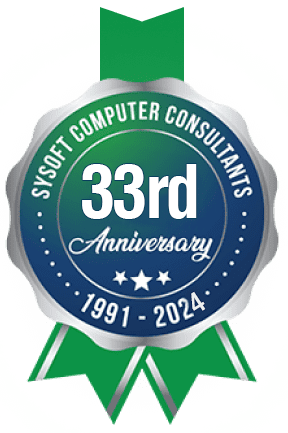Microsoft Windows Outage CrowdStrike Analysis Highlights Security Risks An unexpected [...]
Because there are as yet no standardized policies on cybersecurity in the business world, most small-to-medium-sized outfits are virtually on their own when it comes to creating cyber defense protocols and controls. Specifically, the SMBs who have no CTO, CIO, or vCIO to speak of, and who outsource only a minimal amount of IT support from “specialists” who perhaps only cover certain aspects of IT.

For those companies who either cannot afford or refuse to outsource full-time IT services a.k.a. vCIO, here are seven steps you can take to get yourself closer to the optimum amount of cybersecurity:
- Install and regularly update business-grade antivirus software. Some of the best antivirus software tools include those developed by VIPRE, ESET, Norton, Panda, Avast, and McAfee.
- Install heavy-duty firewall protection. There are free firewall tools like ZoneAlarm, Comodo, and TinyWall, and those you pay for, all of varying levels of protection. The top enterprise firewalls of 2015 included Fortinet FortiGate, Cisco ASA, and pfSense, among many others that provide reliable levels of security.
- Put all guests on a segregated Wi-Fi network. This allows you a higher measure of safety from dedicated-network infiltration – either deliberately or inadvertently – by your cyber visitors.
- Always use complex passwords and change passwords often. Accompany this with firm password policies in the workplace that are followed to the letter (and number and symbol) that discourage things like password sharing and using the same password for multiple logins.
- Have employee tutorials and guidelines on cyber safety and defense. Have all your staff learn and be experts on how to recognize and eliminate potential cyber threats.
- Have multiple forms of data backups in place. Your data backup methods should include solid-state methods like external hard drives and thumb drives (SSD, USB flash drives), network-attached storage, and online storage services like Carbonite, Google Drive, Mozy, or SkyDrive. You may want to consider cloud backup solutions as well.
- Let a managed IT services provider (MSP) monitor and safeguard your cybersecurity requirements. If you are a small or medium-sized business outfit and have been hesitant to take the step to having an IT MSP handle all of your IT support, the move will be worth eliminating the constant stress and worry over whether or not the next email your employee clicks on will wipe out your network database.
To wit: cybersecurity leader Symantec said in a recent report that in 2015, 43% of data breaches targeted companies with less than 250 employees. This figure has been steadily rising over the last five years, up from 18% in 2011, and will likely continue to rise in the coming years.
Let the IT Experts Handle Your Cyber Safety and Security
If you need further advice about cyber safety awareness and security, Sysoft is a proven leader in providing IT consulting and cybersecurity in Toronto. Contact one of our expert IT staff at (416) 410-7268 or send us an email at info@sysoft.ca today, and we can help you with all of your cyber safety, defense, and security questions or needs.




